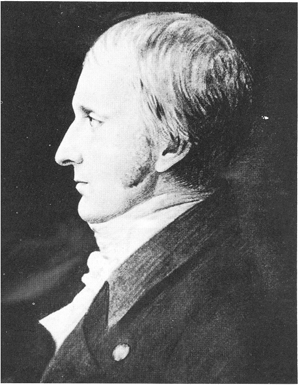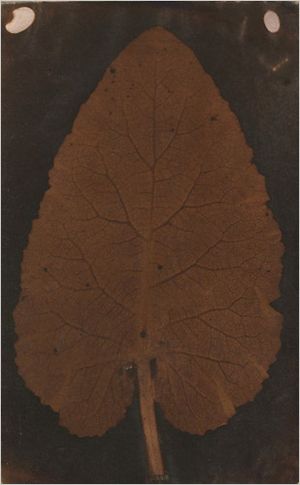Thomas Wedgwood (photographer) facts for kids
Quick facts for kids
Thomas Wedgwood
|
|
|---|---|

Thomas Wedgwood
|
|
| Born | 14 May 1771 Etruria, Staffordshire, England
|
| Died | 10 July 1805 (aged 34) England
|
| Occupation | Inventor, photographer |
| Years active | 1790–1805 |
| Parent(s) | Josiah Wedgwood Sarah Wedgwood |
| Relatives | Josiah Wedgwood II (brother) Susannah Darwin (sister) Charles Darwin (nephew) |
Thomas Wedgwood (born May 14, 1771 – died July 10, 1805) was an English inventor. He is best known for his early work in photography.
He was the first person to think about making permanent pictures. He tried to capture images from a camera obscura using materials sensitive to light. His experiments mostly created shadow images called photograms. These images, however, faded when exposed to light. Still, his ideas and early success led some historians to call him "the first photographer."
Contents
Life of Thomas Wedgwood
Thomas Wedgwood was the fifth of eight children. His parents were Josiah Wedgwood and Sarah Wedgwood. His father started the famous Wedgwood company. Thomas was also the uncle of the famous naturalist Charles Darwin. This connection came through his sister, Susannah Wedgwood.
He was born in Etruria, Staffordshire, England. This area is now part of Stoke-on-Trent.
Thomas grew up and went to school in Etruria. From a young age, he loved art. He spent much of his life with artists, sculptors, and poets. He became their supporter after he inherited money from his father in 1795.
As a young man, Wedgwood became interested in how children learn best. He studied babies and how they take in information. He believed that most learning for young brains came through their eyes. This meant light and images were very important.
Thomas Wedgwood never got married and had no children. He was often sick as a child and throughout his adult life. He passed away in Dorset at the age of 34.
How Thomas Wedgwood Pioneered Photography
Wedgwood was the first person known to use chemicals sensitive to light. He used them to capture silhouette images on materials like paper. He was also the first to try photographing an image from a camera obscura.
We don't know exactly when he started his photo experiments. But he might have given advice to James Watt before 1800.
In his many tests, Wedgwood used paper and white leather. He coated them with silver nitrate. The leather turned out to be more sensitive to light. His main goal was to capture real-world scenes with a camera obscura. However, these attempts did not work well.
He did succeed in making silhouette images. He placed objects directly on the treated surface and exposed them to sunlight. He also captured shadow images from sunlight passing through paintings on glass. In both cases, the sunny areas quickly turned dark. The shaded areas did not change.
Wedgwood met a young chemist named Humphry Davy. This happened at a clinic in Bristol where Wedgwood was getting treatment. Davy wrote about his friend's work in a journal in 1802. The article was called "An Account of a Method of Copying Paintings upon Glass, and of Making Profiles, by the Agency of Light upon Nitrate of Silver." It explained Wedgwood's methods and achievements.
This paper from 1802 greatly influenced other scientists. It was widely known and mentioned in chemistry textbooks. David Brewster, a friend of later photography pioneer Henry Fox Talbot, wrote about the paper. It was even translated into French and German.
Another pioneer, J. B. Reade, was influenced by Wedgwood's work. He read that Wedgwood got faster results using leather. Reade tried treating paper with a tanning agent. He found that this paper darkened faster when exposed to light.
Challenges with Early Photographs
Wedgwood could not "fix" his pictures. This meant they were not safe from light. If not kept in total darkness, they would slowly turn completely dark. This would destroy the image.

Even though they weren't fixed, these early photographs could be saved. They had to be stored in complete darkness. Also, they needed protection from long exposure to air. For example, keeping them pressed tightly between book pages helped.
In the late 1830s, Henry Fox Talbot and Louis Daguerre found ways to chemically stabilize images. This made them much less sensitive to light. In 1839, John Herschel discovered that "hypo" (now called sodium thiosulfate) could dissolve silver salts. This allowed the remaining light-sensitive chemicals to be washed away. This truly "fixed" the photograph.
In 2008, there were many news reports about a possible Wedgwood photograph. It was a photogram of a leaf's silhouette. It had a "W" mark in one corner. An expert suggested it might be by Thomas Wedgwood from the 1790s. An authentic Wedgwood image would be very valuable.
However, other historians disagreed. The image was pulled from auction for more study. Later, new discoveries showed the "W" was for William West. He sold "photogenic drawing paper" in 1839. The image was likely made that same year by Sarah Anne Bright, an amateur photographer.
Thomas Wedgwood's Support for Coleridge
Wedgwood was a friend of the poet Samuel Taylor Coleridge. In 1798, Wedgwood arranged for Coleridge to receive money regularly. This allowed Coleridge to focus on his philosophy and poetry.

